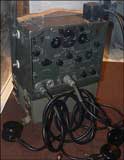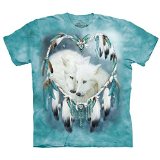People of the Legends
Indigenous People of North America - Navajo
Code Talkers - continued
The Code Talker code
29 Navajo military recruits created the code in 1942. They were at Camp Pendleton, Oceanside, California for boot camp training (first training as soldiers).
They used Navajo words for English words and for letters in the English alphabet. For example:
Letter |
Navajo word |
English word |
A |
Wol-La-Chee |
Ant |
B |
Shush |
Bear |
C |
Ba-Goshi |
Cow |
|
Bih-Tse-Dih |
Before |
|
Nas-Pas |
Circle |
They created a dictionary with words and letters for all the different types of messages that might need to be sent. Nothing was written down – the Code Talkers had to remember everything. Then they had to train other Navajo Marines to remember the code and to send messages as Code Talkers.
 During the war, about 400 Navajo Code Talkers sent messages using military telephones and radios.
During the war, about 400 Navajo Code Talkers sent messages using military telephones and radios.
They were part of every battle that the US Marines were involved in, in the Pacific.
Saying "Thank You" to the Code Talkers
The Code Talkers’ work was thought of as ‘top secret’ until 1968. Because of this they were not officially thanked by the Federal government or the American people.
 On September 17th 1992 a Navajo Code Talker exhibit (monument) was opened at the Pentagon in Washington, D.C.
On September 17th 1992 a Navajo Code Talker exhibit (monument) was opened at the Pentagon in Washington, D.C.
On display is equipment used by the Code Talkers, photographs, statues and information about how the code worked.
35 Code Talkers and their families travelled from the Navajo Nation to the Pentagon for the opening ceremony.

The Congressional Gold Medal was awarded to the Code Talkers.
The exhibit is now popular with tourists who visit the Pentagon, and the work of the Navajo Code Talkers is famous around the world.
There is also a memorial to the Code Talkers at Window Rock, near the Navajo Nation's government Council Chamber.


Since World War II Navajo people have fought for the United States and their Navajo Nation in Korea and Vietnam in the 1950s, 1960s and 1970s, in Desert Storm in the 1990s and now in Iraq and Afganistan.




